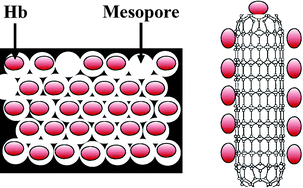A promising electrochemical biosensing platform based on graphitized ordered mesoporous carbon
Abstract
Three dimensional ordered graphitized mesoporous carbon GMC-6 (pore diameter ∼6 nm) and GMC-13 (pore diameter ∼13 nm), prepared by a nickel-catalyzed template-assisted method, were explored systematically for the construction of enzyme-based electrochemical biosensors. Comparative studies revealed that GMC-6 offer significant advantages over GMC-13 and graphitized multiwalled


 Please wait while we load your content...
Please wait while we load your content...